Chinese money transformed a sleepy beach town in Cambodia. Then came disaster
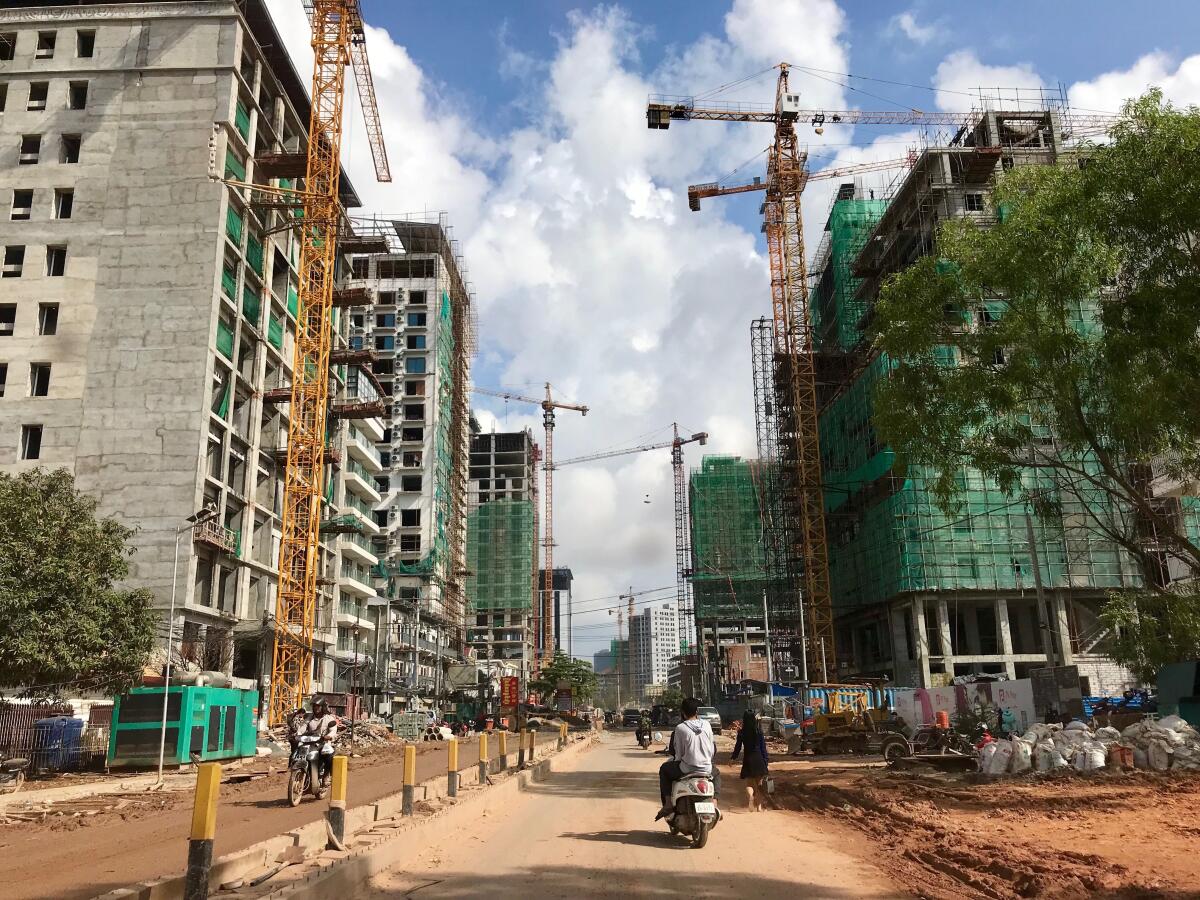
- Share via
SIHANOUKVILLE, Cambodia — Ros Sitha was asleep with dozens of other construction workers on the unfinished second floor of the hotel they were building in the heart of this booming coastal city. The Chinese owners had let the workers live on site — common practice in a city where nearly every block is under redevelopment.
Shortly before dawn, the 40-year-old was jolted awake by a loud crack from the floors above, then another.
Seconds later, the structure gave way, toppling to one side and trapping more than 50 workers beneath hunks of concrete and twisted metal.
More than two days later, Ros Sitha was the last of 26 survivors to be pulled to safety. At least 28 Cambodians were killed, making the collapse the country’s deadliest building disaster in decades.
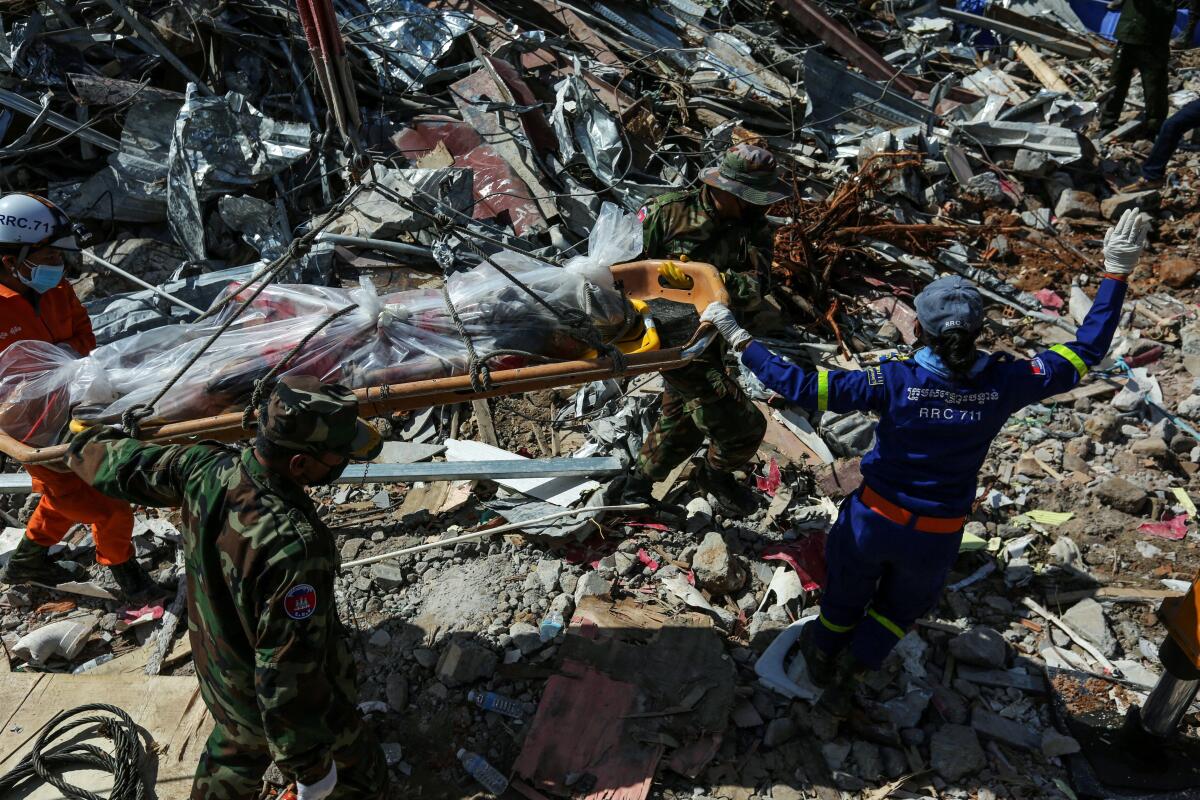
For many Cambodians, the June 22 catastrophe and its aftermath were confirmation that their government cared more about courting Chinese investment than it did about them.
As Beijing expands its economic influence overseas, it has found few partners more willing than Cambodia’s authoritarian Prime Minister Hun Sen, who has ushered in Chinese state-owned companies to build roads, bridges, hydroelectric plants, industrial parks and a port.
Cambodia’s strategic location, at the doorstep of the South China Sea, makes it a geopolitical prize, and Beijing’s support — backed by billions of dollars in loans — has helped Hun Sen weather U.S. criticism of crackdowns against opposition parties, civil society groups and independent media that have made Cambodia effectively a one-party state.
Hun Sen’s government has also looked the other way as private Chinese investors bought up property and built hotels, casinos and other businesses to cater to growing numbers of Chinese tourists. Experts believe many Chinese businessmen are using countries like Cambodia to park their wealth, hiding profits from Communist Party authorities and hedging against an economic slowdown at home.
Cambodian authorities have exercised little oversight of the building boom, which environmental and labor groups say has used underage and untrained workers, avoided safety inspections and damaged the environment.
“From the Chinese perspective, Cambodia is a wonderland of rapid development deals,” said Bradley J. Murg, a Southeast Asia expert and professor at Seattle Pacific University. “But Cambodians fear they’re becoming a dumping ground.”
::
Nowhere in Cambodia is the Chinese presence more visible than here in Sihanoukville, a city of 300,000 that locals say has become a de facto colony of Beijing.
A decade ago, the only foreigners in the city were Western backpackers seeking bamboo huts, $1 meals and cheap marijuana on empty stretches of sand. Now Sihanoukville is a construction site where jackhammers thunder from nearly every corner.

Provincial officials say Chinese nationals own 90% of businesses, including more than 150 hotels, hundreds of restaurants, scores of massage parlors and karaoke clubs and four dozen casinos.
Beside the metal detectors at one gambling hall entrance, a sign stated: No Cambodians allowed.
“It feels like a Chinese town, not a Cambodian town,” said Teng Soda, a 35-year-old who rented her house in central Sihanoukville last year to a Chinese investor and moved with her husband and two children to the city’s outskirts. Cambodian officials speak glowingly of “a city of miracles,” but she said that runaway development has made life miserable for its original inhabitants. Cranes tower above muddy, potholed streets. Rolls-Royce sedans park next to piles of burning trash. Power goes out regularly.
“Everything is in short supply — electricity, water, the sewage system,” she said. “Waste management is zero. Food prices have doubled. It used to be very quiet here, but in the last two years the growth has been uncontrollable.”
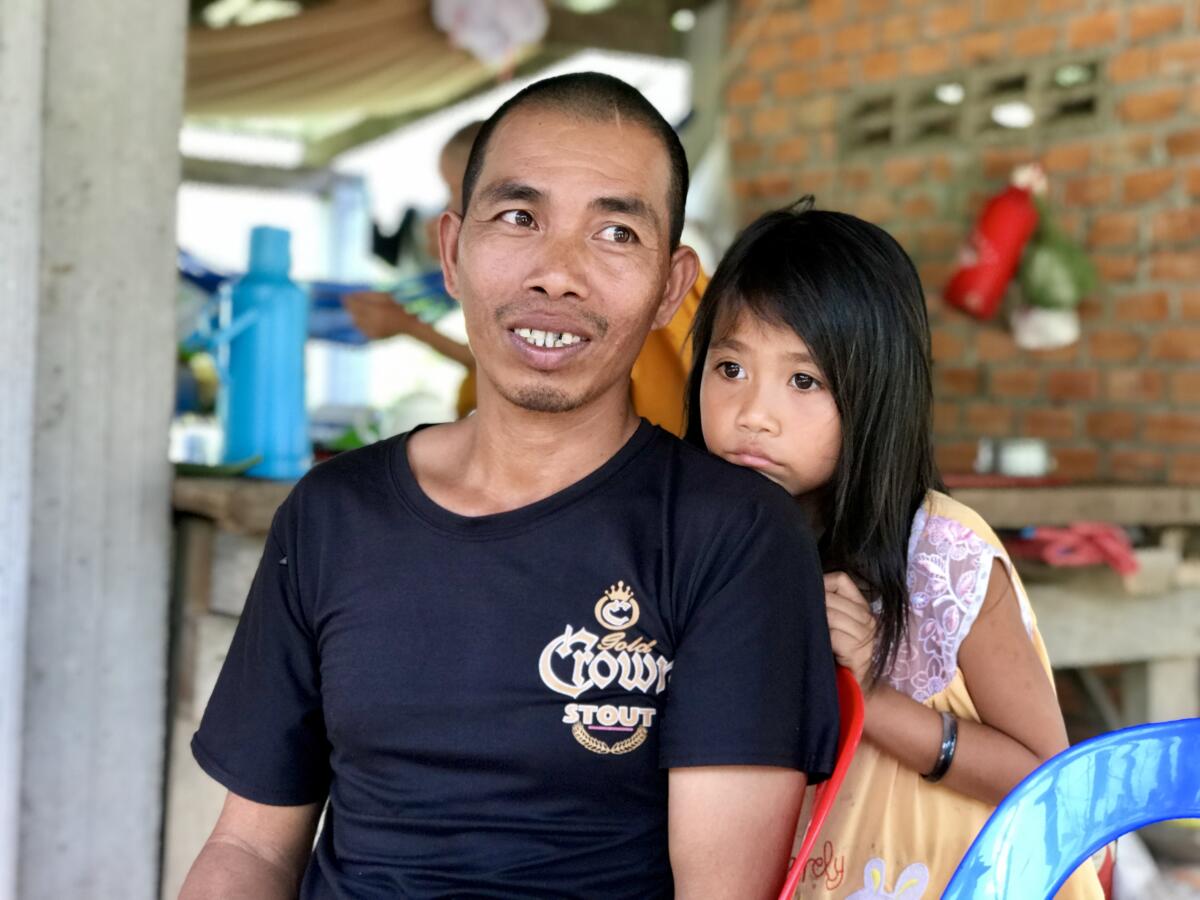
Ros Sitha learned about Sihanoukville last year from some young men near his home in Krouch, a village of coconut palms and rice fields seven hours away on the banks of the Mekong River.
He was looking to repay the $2,000 he had borrowed to replace his family’s bamboo hut with a concrete house, and a construction job that paid $13 or $14 a day sounded like a good way to do it.
So he boarded a bus to the coast hoping he would save enough to return home in six months.
When he arrived in Sihanoukville in March, he said, it “felt like a foreign country.”
He started work immediately, with no training or safety equipment, hauling sacks of cement.
Every few days, trucks deposited new unskilled laborers from the countryside, some of whom appeared to be teenagers. Children sometimes came along, wandering amid the exposed rebar and loose bricks while their parents worked eight- to 10-hour shifts.
Human rights groups say the Chinese-fueled boom has created a market for underage workers, some as young as 13. Accidents occur almost daily but are rarely reported, said Sok In, president of a labor union representing construction workers.
The construction process in Sihanoukville is “build first, license later,” according to a recent World Bank report, and local authorities have seemed powerless to stop even major violations.
This spring, two Chinese-owned hotels defied multiple city orders to shut down after they were found to have been disgorging raw sewage onto beaches in Sihanoukville. Police and court officials eventually closed one hotel, but environmental groups say the other has continued to operate.
Activists said the developer of the hotel where Ros Sitha worked had twice been ordered to stop work due to a lack of permits, most recently in March. Both times, laborers said, work resumed after a few days with no apparent changes.
At the end of each afternoon, when their shifts ended, the workers would bond over meals of vegetables and rice cooked on gas stoves on the second story where many slept on the bare concrete. On Sundays, their lone day off, some ventured into the Chinese-owned electronics shops to gawk at the latest gadgets.
In one of those shops, Ros Sitha bought his first smartphone, then had a friend help him open a Facebook account so his family could send him photos from Krouch.
It helped get him through the hours after the collapse.
Wedged between two masses and barely able to move, he waited 60 hours to be rescued. His phone couldn’t get a signal, but he kept his spirits up by scrolling through photos of his children, watching again and again a clip of his 8-year-old daughter reciting a poem back in their village.
::
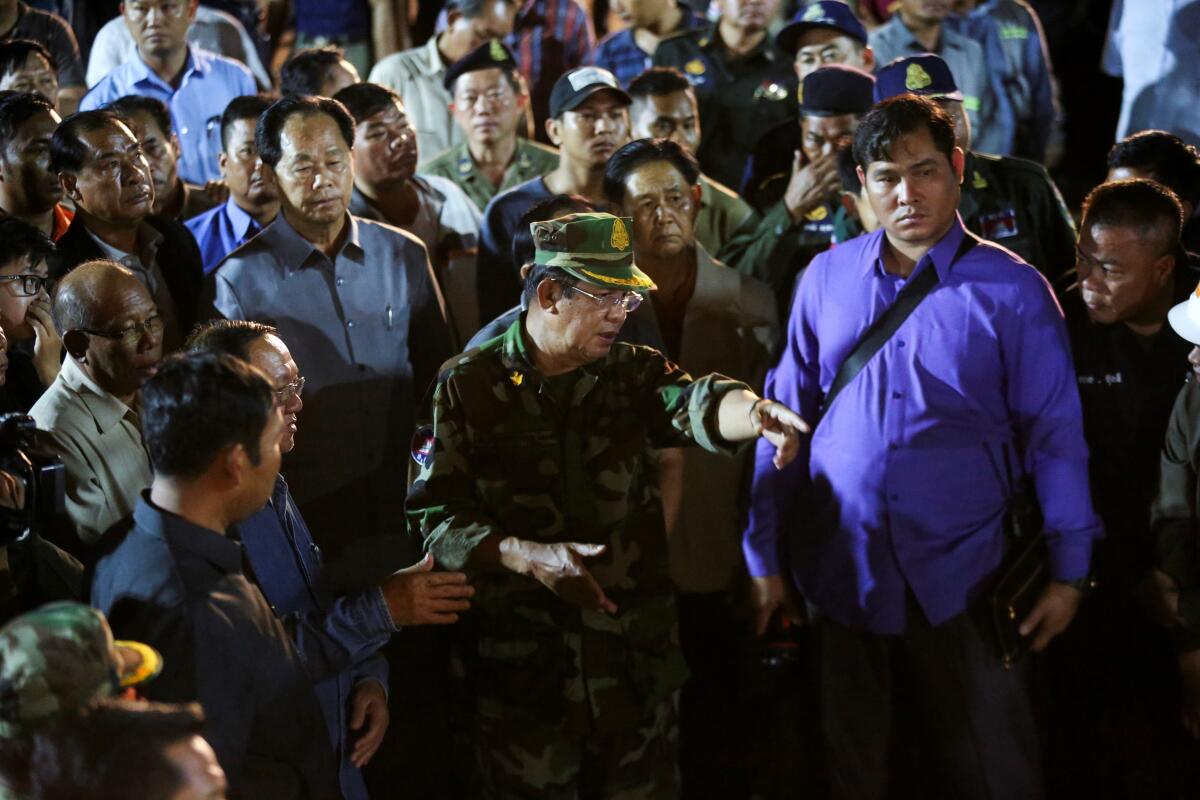
As rescue teams dug bodies out and survivors convalesced in the nearby provincial hospital, it seemed Cambodia might finally slow Chinese development.
Authorities arrested seven men, including the building owner and four other Chinese nationals, and accused them of involuntary manslaughter and other charges that carry a maximum prison sentence of 10 years. The Chinese Embassy issued a statement saying it was saddened by the incident and supported “a thorough investigation of the accident.”
Lawyers for the accused could not be reached for comment.
Government inspectors fanned out across Sihanoukville and shut down construction on five Chinese-owned buildings. The provincial governor resigned and the head of the national disaster management committee was fired.
But it soon became clear that any reforms would be temporary.
Within days, the government announced that both officials who lost their jobs had been reassigned to senior positions.
In a visit to the disaster site, Hun Sen vowed to stop illegal construction but defended China, saying: “If there were no Chinese investors, let me ask you, would we have tall buildings like this?”
Sophal Ear, an associate professor at Occidental College and authority on Cambodia, said Hun Sen was determined to preserve his relationship with Beijing.
“There’s too much money involved,” Ear said. “It seems the MO is, ‘Nothing to see here, move along.’”
At one Chinese-owned restaurant where construction was halted, several workers still milled about on a recent afternoon, as if on lunch break. A sign plastered outside the five-story building cited the “poor quality” of the steel frame and missing licenses, construction permits, environmental assessments and fire prevention information.
Pav Mom, a 28-year-old migrant worker living at the site, said the developer had asked her to stick around because he was confident construction would resume.
“I don’t really feel safe,” she said, “but where am I going to go?”
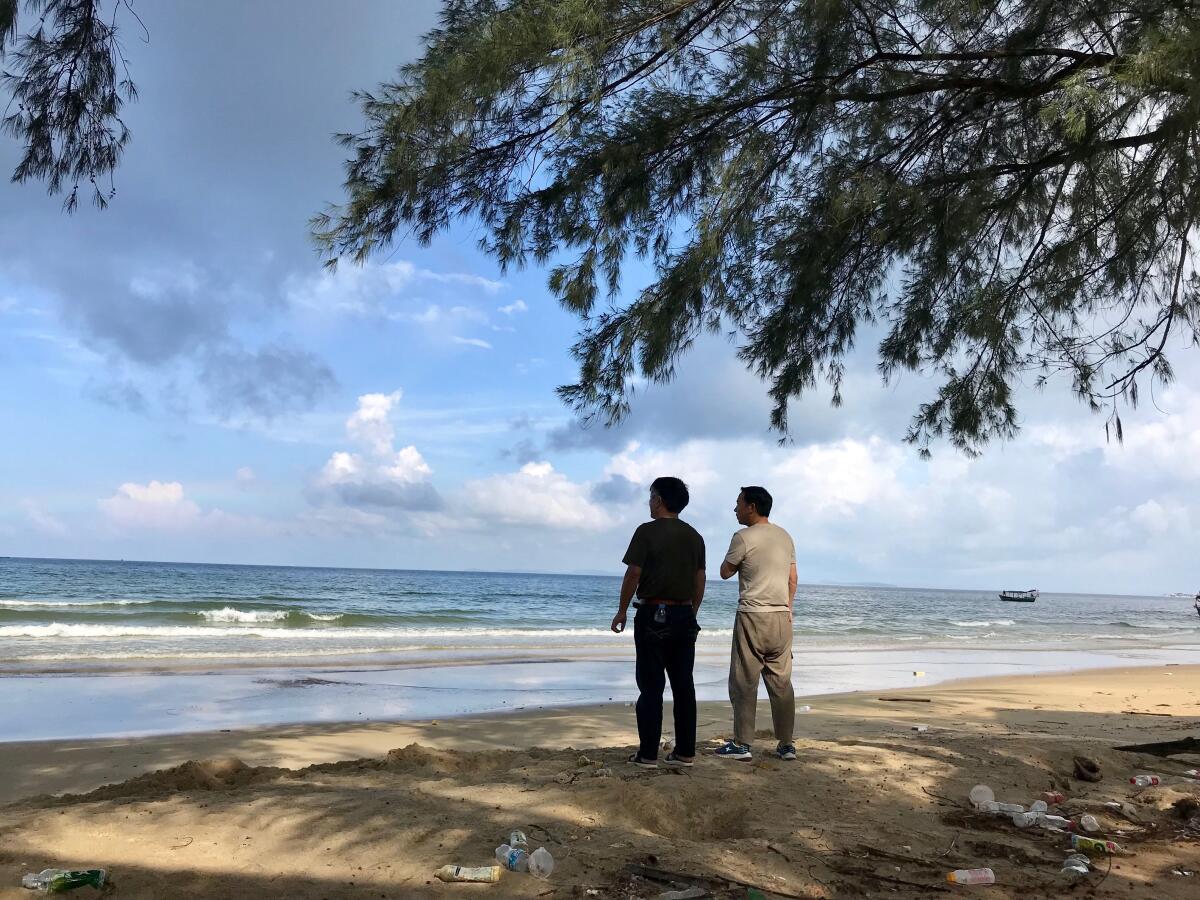
The government and private donors paid families of those who died in the collapse $70,000 each. One of the youngest victims was Chon Thean, an 18-year-old from a village near Krouch, who had worked in construction in Sihanoukville and other cities since he was 14. He had dropped out of school to support his family, including a father who was partially blind.
“It wasn’t legal but we had no choice,” said his father, Khem Then, 43. “We didn’t have any idea about what is happening in Sihanoukville — all we know is there are jobs.”
Ros Sitha spent three days in the hospital recovering from dehydration and scrapes to his arm, then returned to Krouch. His wife and daughter pleaded with him not to take another job away from the village. He and other survivors had each received $30,000 in compensation, and he thought of using the money to open a shop.
Despite his ordeal, he harbored little resentment.
“The Chinese helped me earn some money for my family,” he said. “So if someone else told me they were thinking of working in Sihanoukville, I wouldn’t say anything. It’s their choice.”
Special correspondent Sokummono Khan contributed reporting for this article, and Gaochao Zhang in The Times’ Beijing bureau contributed research.
More to Read
Sign up for Essential California
The most important California stories and recommendations in your inbox every morning.
You may occasionally receive promotional content from the Los Angeles Times.










